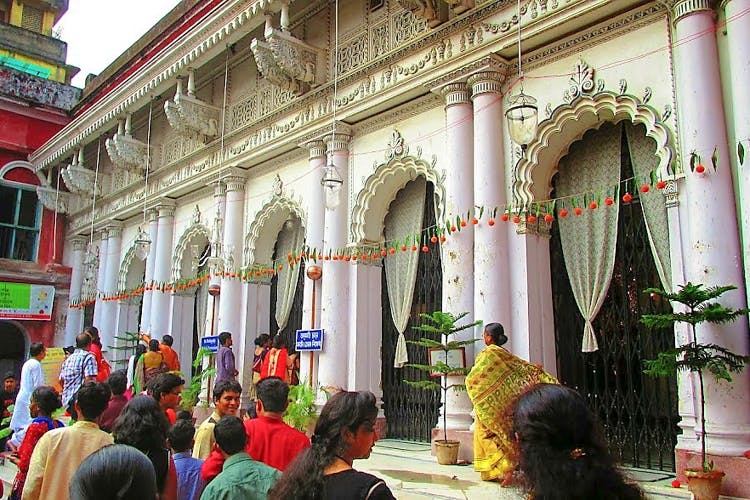Sabarna Roy Choudhury family puja
 Established in 1610, is the oldest in the city and holds a special place in its lore. It was a time when Kolkata was but a nascent settlement and the puja's traditions were rooted deeply in ancient texts. For centuries the family has upheld these rituals and even today the sacred rites are performed with the same reverence as they were in the 17th century. This continuity provides a powerful link to the past, reminding onlookers of the city's origins and the families who laid its cultural foundations. The puja is a pilgrimage for those who seek to understand the city's historical soul.
Established in 1610, is the oldest in the city and holds a special place in its lore. It was a time when Kolkata was but a nascent settlement and the puja's traditions were rooted deeply in ancient texts. For centuries the family has upheld these rituals and even today the sacred rites are performed with the same reverence as they were in the 17th century. This continuity provides a powerful link to the past, reminding onlookers of the city's origins and the families who laid its cultural foundations. The puja is a pilgrimage for those who seek to understand the city's historical soul.

initiated in 1757, arose from a pivotal moment in the city's history. Founded by Raja Nabakrishna Deb, it was a magnificent display of wealth and influence. This puja was a grand affair attended by British dignitaries and became a symbol of a new elite. Yet, despite its worldly origins, the puja itself remained steeped in tradition. It was a space where political maneuvering and spiritual devotion existed side by side. The grandeur of the Rajbari puja still captivates observers but it is the deep rooted faith that continues to draw devotees year after year.
Hathkhola Dutta Bari puja
 Further adding to this historical mosaic are the Hathkhola Dutta Bari puja from 1716 and the Chandra Bari puja from around 1765. These family celebrations reflect the aspirations and traditions of Kolkata's merchant and aristocratic classes. The Dutta family puja in Ahiritola and the Chandra family puja with its distinctive customs represent the rich diversity of devotional practices within the city. Each courtyard, each mandap is a chronicle of a family's journey, their successes, and their faith. They have withstood the march of time remaining as beacons of cultural heritage.
Further adding to this historical mosaic are the Hathkhola Dutta Bari puja from 1716 and the Chandra Bari puja from around 1765. These family celebrations reflect the aspirations and traditions of Kolkata's merchant and aristocratic classes. The Dutta family puja in Ahiritola and the Chandra family puja with its distinctive customs represent the rich diversity of devotional practices within the city. Each courtyard, each mandap is a chronicle of a family's journey, their successes, and their faith. They have withstood the march of time remaining as beacons of cultural heritage.
Dutta Chaudhury family puja
 The Dutta Chaudhury family puja in Baranagar, dating from 1773, also adds to this venerable list. It is another example of a household rite that has survived generations. Worship here takes a unique form with the goddess revered as Shiva Durga, a tradition that speaks to a specific lineage and devotional practice. The preservation of such unique rituals is crucial for cultural memory. These pujas are more than just festivals; they are historical markers, each one a page in Kolkata’s living history book, read and re read each autumn by generations who come to seek blessings and a connection to their heritage.
The Dutta Chaudhury family puja in Baranagar, dating from 1773, also adds to this venerable list. It is another example of a household rite that has survived generations. Worship here takes a unique form with the goddess revered as Shiva Durga, a tradition that speaks to a specific lineage and devotional practice. The preservation of such unique rituals is crucial for cultural memory. These pujas are more than just festivals; they are historical markers, each one a page in Kolkata’s living history book, read and re read each autumn by generations who come to seek blessings and a connection to their heritage.





